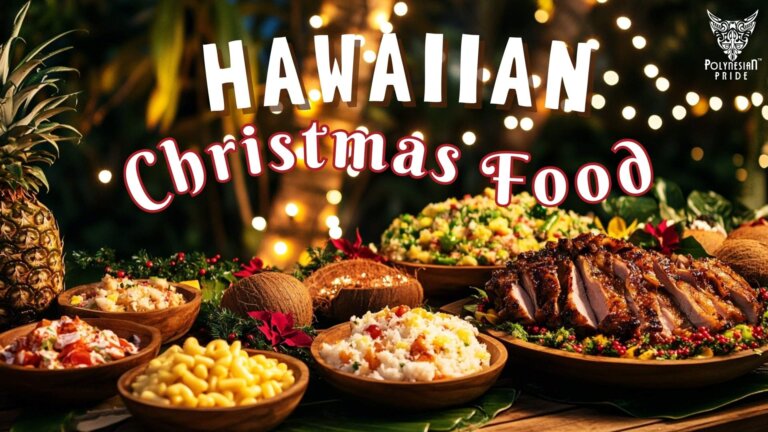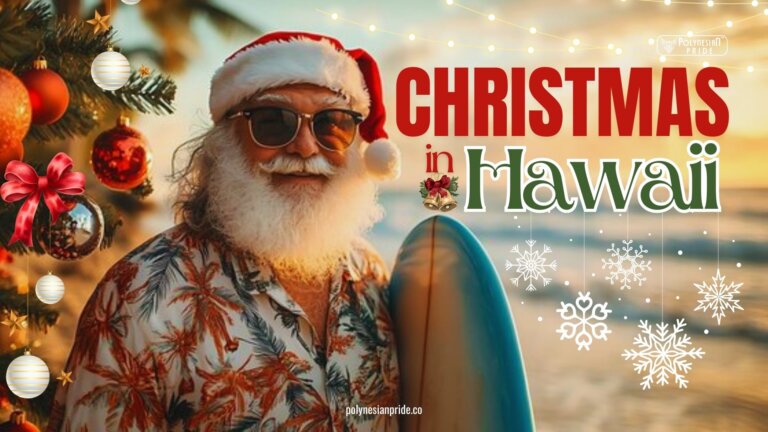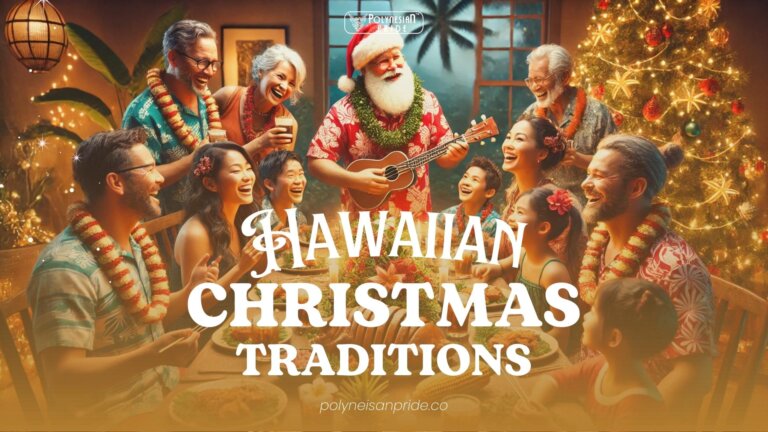French Polynesia Islands: Travel Guide, Map & Attractions

French Polynesia, a stunning archipelago in the South Pacific, is renowned for its breathtaking islands, rich culture, and vibrant marine life. Comprising over 100 islands and atolls, this paradise offers travelers an escape into a world of natural beauty, adventure, and cultural richness. From the luxurious resorts of Bora Bora to the rugged landscapes of the Marquesas Islands, French Polynesia is a dream destination that captivates the hearts of many. This travel guide will explore the geography, history, attractions, and practical information about the French Polynesia Islands, encouraging you to embark on your journey to this enchanting part of the world.
Geography of French Polynesia Islands
Map Overview
Positioned halfway between California and Australia, French Polynesia is a vast and enchanting archipelago in the South Pacific Ocean. The islands stretch over a north-to-south distance of 2,000 kilometers (1,242 miles), offering a rich diversity of landscapes and ecosystems. A map of French Polynesia highlights its strategic layout across the central South Pacific, serving as a visual guide for travelers. Each island boasts distinct topography and experiences, ranging from Tahiti’s vibrant cultural hub to the Tuamotu atolls’s tranquil remoteness, making it an enticing destination for those seeking adventure and relaxation.
French Polynesia on Map

French Polynesia covers an impressive 4,167 square kilometers (1,609 square miles) of land and approximately 5 million square kilometers (1.93 million square miles) of maritime area. This region comprises 118 islands and atolls organized into five major archipelagos: the Society Islands, Tuamotu Archipelago, Gambier Islands, Marquesas Islands, and Austral Islands. These groups form a stunning archipelago, showcasing the region’s diverse beauty and cultural heritage.
Geographical Coordinates
Situated between 8° and 27° South latitude and 134° and 154° West longitude, French Polynesia enjoys a tropical climate ideal for year-round travel. This geographic positioning invites visitors to explore its paradisiacal islands, offering an unforgettable experience in the heart of the South Pacific.
Archipelago Overview
French Polynesia is a magnificent tapestry of islands and atolls in the heart of the Pacific Ocean, each boasting unique allure and cultural significance. The islands are divided into five distinct archipelagos, each offering distinct experiences and charm:
- Society Islands: The most famous group, home to Tahiti and Bora Bora, known for lush landscapes and luxurious resorts.
- Tuamotu Archipelago: Comprised mainly of coral atolls, it’s a paradise for divers and marine life enthusiasts.
- Gambier Islands: A hidden gem known for its rich cultural history and traditional Polynesian lifestyle.
- Marquesas Islands: Rugged and remote, these islands boast stunning natural beauty and vibrant cultural traditions.
- Austral Islands: Known for cooler climates and distinct flora, these islands offer a unique, less touristy experience.
Each archipelago in the French Polynesia Islands contributes to the region’s distinct identity, offering travelers a diverse range of landscapes, cultures, and experiences to explore.
French Polynesia Largest Island: Tahiti
Discover Tahiti’s Vibrant Culture
Tahiti, the largest island in French Polynesia, is an exquisite blend of natural beauty and cultural heritage. The island is divided into two parts: Tahiti Nui, the more significant and urbanized section, and Tahiti Iti, known for its untouched landscapes. Combining bustling city life and pristine nature offers travelers a diverse experience that captures the essence of Polynesian charm.
Tahiti’s lush rainforests, majestic mountains, and serene beaches are popular attractions, drawing visitors from around the globe. The island’s vibrant cultural scene is characterized by lively festivals, traditional arts, and bustling markets offering an authentic Polynesian life taste. Tahiti combines ancient traditions with modern conveniences as a cultural and economic hub, providing an enriching travel experience.
Capital City – Papeete
Papeete, Tahiti’s bustling capital, is the entry point to French Polynesia and is a dynamic blend of modernity and tradition. Known for its colorful markets, lively nightlife, and picturesque waterfront, Papeete offers visitors a vibrant cultural experience. The city is renowned for the Marché de Papeete. In this bustling market, travelers can find local crafts, fresh produce, and traditional Polynesian delicacies.

The capital’s cultural significance extends beyond its markets. Papeete is home to significant landmarks like the Tahiti Pearl Museum. It hosts numerous festivals and events throughout the year that celebrate Polynesian culture. This includes the famous Heiva i Tahiti festival, a showcase of traditional dance, music, and sports that offers a glimpse into the islands’ rich heritage.
Besides its cultural attractions, Papeete is the hub for French Polynesia’s international travel, with Faa’a International Airport nearby. This makes Papeete not just a city to explore but also a strategic starting point for discovering the diverse beauty of the surrounding islands.
French Polynesia Four Seasons: When to Visit
The French Polynesia Islands, with their tropical climate, offer distinct wet and dry seasons, each providing unique experiences for travelers. Knowing the best time to visit French Polynesia can help you plan your perfect island getaway.
Dry Season (May to October)
The dry season in French Polynesia is characterized by pleasant weather, making it an ideal time for beachgoers and adventure seekers. During these months, the islands enjoy warm, sunny days with lower humidity, perfect for sunbathing on Bora Bora’s Matira Beach or snorkeling in the crystal-clear lagoons of Moorea.
- Weather: Expect average temperatures between 71°F (22°C) and 82°F (28°C), with cool breezes and minimal rainfall.
- Whale Watching: This is the prime season for whale watching, as humpback whales migrate to the warm waters around the islands from July to November. You can book excursions to witness these magnificent creatures up close, particularly around Rurutu in the Austral Islands.
- Cultural Festivals: The dry season coincides with the Heiva i Tahiti, a vibrant festival held in July that celebrates Polynesian culture through dance, music, and traditional sports. Participating in or witnessing this event provides a deep insight into the island’s heritage.

This period also sees a higher influx of tourists, so booking accommodations and activities well in advance is advisable to secure the best experiences.
Wet Season (November to April)
The wet season in the French Polynesia Islands brings more rainfall. Still, it also offers a different charm and numerous advantages for visitors looking for a more relaxed atmosphere. During these months, the islands transform into lush paradises with vibrant vegetation and rejuvenated landscapes.
- Weather: While there’s increased humidity and rain, temperatures remain warm, averaging between 75°F (24°C) and 86°F (30°C). Rain showers are typically brief, often followed by sunshine.
- Natural Beauty: The wet season is perfect for exploring the verdant rainforests and majestic waterfalls of Tahiti and Moorea. Hiking trails such as the Fautaua Valley become more picturesque, with rivers and waterfalls in full flow.
- Quieter Travel: This time of year tends to be less crowded, providing a more intimate experience with the islands. It’s an excellent opportunity to engage with local communities, partake in traditional ceremonies, and enjoy the peace and tranquility of secluded beaches.
- Budget-Friendly: Many resorts and tour operators offer discounted rates, making it a cost-effective time to visit without compromising the beauty and charm of the islands.

The wet season also offers unique cultural insights, with local festivities highlighting Polynesian traditions and cuisine.
French Polynesia History
Early Settlers and Traditions
French Polynesia’s history begins with the arrival of the first Polynesian settlers, who navigated vast stretches of the Pacific Ocean over 3,000 years ago, bringing their unique cultures and traditions. These early inhabitants established themselves throughout the islands, creating a vibrant society deeply connected to the land and sea. Skilled navigators, the Polynesians used the stars, ocean currents, and bird migrations to guide their voyages, demonstrating a profound understanding of their natural surroundings.
The settlers developed a rich cultural heritage marked by oral traditions, mythology, and artistic expressions. They cultivated staple crops such as taro, breadfruit, and coconuts, forming the basis of their diet. Traditional practices, including tattooing, dance, and music, became integral to their identity, reflecting their beliefs and values. The communal lifestyle fostered strong social bonds, with families and clans working together to sustain their communities.
Archaeological evidence suggests that these early Polynesians lived in harmony with nature and deeply respected their environment. The Lapita culture, known for its distinctive pottery, played a significant role in the development of Polynesian society, leaving behind a legacy that can still be observed in contemporary practices.
European Influence
The arrival of European explorers in the late 18th century marked a turning point in the history of the French Polynesia Islands. Notable figures like Captain James Cook documented their encounters with the indigenous population, leading to increased interest in the islands. However, these encounters also brought challenges, including introducing diseases that significantly impacted the local population, causing a decline in numbers by as much as 30-40% during this period.
Colonization followed, with France establishing control over the islands in the 19th century. Missionaries significantly shaped the islands’ cultural landscape, introduced Christianity, and altered traditional practices. While some aspects of Polynesian culture persisted, others were suppressed or transformed under colonial rule. For instance, traditional religious practices were replaced with Christian rituals, gradually eroding ancient customs.
Despite these changes, elements of Polynesian culture have endured, particularly in the realms of art, language, and social structure. The legacy of colonization continues to influence contemporary society in French Polynesia as the islands navigate the complex interplay between tradition and modernity.
Modern Era
In the modern era, French Polynesia transitioned into a French overseas territory, maintaining its unique cultural identity while integrating into the broader French nation. This duality has shaped the islands’ contemporary landscape, preserving their traditional heritage while embracing modern technologies and globalization.
Tourism has significantly contributed to French Polynesia’s economy, accounting for around 17% of its GDP. Despite the influx of visitors, efforts are being made to preserve and promote traditional arts and crafts. Local artisans continue to create intricate wood carvings, woven textiles, and traditional tattoos, ensuring the islands’ cultural heritage remains vibrant. Festivals celebrating Polynesian traditions draw locals and visitors, fostering pride in French Polynesia’s rich history.
In addition to cultural preservation, there is a growing movement towards environmental sustainability. Initiatives to protect the islands’ unique ecosystems are in place, balancing economic growth with ecological responsibility. Sustainable tourism efforts focus on maintaining the natural beauty of the French Polynesia Islands, ensuring future generations can enjoy this paradise in the South Pacific.
Traditional Arts
Polynesian traditional arts encompass various forms of cultural expression, including tattooing, dance, and music, each offering a unique insight into the island’s heritage and identity.
Tattooing

Tattooing holds deep-rooted significance in Polynesian culture, representing a person’s lineage, status, and personal journey. The intricate designs often tell stories and convey spiritual meanings, with patterns varying between different islands and regions. Historically, tattoos were applied using natural tools and pigments, with designs signifying essential life events or achievements.
Dance
Traditional Polynesian dance is a graceful blend of rhythm and storytelling. The renowned Tahitian dance, Ori Tahiti, is characterized by dynamic hip movements and elaborate costumes. Dance performances accompany celebrations and ceremonies, showcasing French Polynesian history and legends. Events like the annual Heiva i Tahiti attract dancers and audiences worldwide, celebrating the islands’ cultural richness.
Beyond entertainment, dance serves as cultural education, passing down values and traditions to younger generations. Workshops and performances ensure dance remains a vital aspect of Polynesian identity, bridging the past and present.

Music
Indigenous music, featuring powerful vocals and rhythmic drumming, reflects the island’s soul. Traditional instruments like the ukulele, pahu drums, and nose flutes create a lively atmosphere during cultural events. Music is a storytelling medium, connecting generations and preserving French Polynesia’s cultural heritage.
The musical landscape is diverse, blending influences from various regions and periods. From the haunting chants of Himene to the upbeat rhythms of modern Polynesian pop, music is a vibrant expression of the islands’ dynamic culture. Artists continue innovating, ensuring French Polynesia’s musical heritage remains relevant and evolving.
Top Attractions and Activities in French Polynesia Islands
Natural Wonders
Beaches and Lagoons
The crystal-clear lagoons of Bora Bora and Moorea are some of the top attractions in the French Polynesia Islands. They offer breathtaking vistas of turquoise waters and vibrant coral reefs, providing the perfect backdrop for relaxation, water sports, and exploration. Bora Bora’s Matira Beach, known for its soft white sands and shallow waters, is a favorite spot for sunbathing and swimming. Luxurious spa treatments overlooking the lagoon enhance the experience in this tropical paradise, making it an unforgettable destination.
Moorea’s stunning beaches, such as Temae Beach and Opunohu Bay, invite travelers to unwind and soak up the sun. The island’s lagoons are ideal for snorkeling and diving, allowing visitors to encounter colorful fish, sea turtles, and coral gardens. Adventurous travelers can embark on boat tours to explore hidden coves and secluded beaches, providing a sense of discovery and adventure. The Aremiti Ferry offers a scenic route between Tahiti and Moorea, making it easy for visitors to enjoy these pristine beaches.

Coral Reefs
French Polynesia’s diverse marine life makes it a diving and snorkeling paradise. The coral reefs teem with color and life, attracting divers worldwide. The vibrant ecosystems support various aquatic species, including reef sharks, rays, and schools of tropical fish. Dive operators offer guided tours to popular dive sites, ensuring visitors can safely explore the underwater wonders of the South Pacific.
Rangiroa and Fakarava in the Tuamotu Archipelago are renowned for their exceptional diving conditions. The passes in these atolls provide thrilling encounters with large pelagic fish. At the same time, the coral gardens offer a mesmerizing underwater landscape. Snorkeling excursions allow non-divers to experience the beauty of the reefs, making it accessible for all visitors. Tiputa Pass and Garuae Pass are particularly famous spots for encountering dolphins and manta rays.

Adventure and Outdoor Activities
Hiking and Trails
Moorea and Tahiti offer breathtaking hikes through lush rainforests, volcanic terrains, and verdant valleys, revealing panoramic views of the surrounding islands. The Belvedere Lookout on Moorea provides a stunning vantage point, allowing hikers to admire the island’s dramatic landscapes, including Cook’s Bay and Opunohu Bay views. Trails lead to hidden waterfalls, where visitors can cool off in refreshing pools surrounded by nature.

Tahiti’s hiking trails, such as the Fautaua Valley and the Aorai Mountain trek, challenge adventurers with steep ascents and rewarding views. The Fautaua Valley is home to the stunning Fautaua Waterfall, one of the highest in the world, offering an incredible spectacle of nature. Guided hikes are available for those seeking local knowledge and insights into the island’s flora and fauna. Exploring these trails offers a unique perspective of the islands, showcasing their natural beauty and biodiversity.
Water Sports
Surfing, kayaking, and sailing are popular activities throughout the islands, offering opportunities to explore the coastline and experience the open sea. Tahiti’s famous surf breaks, such as Teahupo’o, attract surfers worldwide, known for its powerful waves and challenging conditions. This iconic surf spot hosts the annual Billabong Pro Tahiti, drawing professional surfers to test their skills on the formidable waves. Surf schools provide lessons and equipment rentals for beginners, making it accessible for all skill levels.

Kayaking and stand-up paddleboarding are fantastic ways to explore the calm lagoons and hidden Moorea and Bora Bora coves. Guided tours often include stops at secluded beaches and snorkeling spots, allowing participants to immerse themselves in the islands’ natural beauty. Sailing excursions provide a leisurely way to experience the breathtaking scenery while enjoying the gentle breeze of the South Pacific. Many tours offer sunset cruises, where visitors can witness the stunning hues of the sky reflecting on the water.
Cultural Experiences
Local Markets
Papeete and other towns are home to vibrant markets where visitors can explore local crafts, savor authentic Polynesian cuisine, and immerse themselves in the island’s culture. The Papeete Market is a bustling hub of activity, offering fresh produce, handmade souvenirs, and traditional delicacies. While interacting with friendly vendors, travelers can sample local dishes, such as poisson cru (a marinated raw fish salad) and coconut bread.

Markets in smaller towns, such as Moorea and Huahine, provide a more intimate experience, allowing visitors to connect with local artisans and learn about traditional crafts. Handwoven baskets, intricate wood carvings, and vibrant textiles are just a few of the treasures waiting to be discovered. Engaging with local vendors fosters community and appreciation for the island’s cultural heritage. Papeete’s Marché de Nuit offers a unique nighttime experience where food stalls serve regional specialties.
Festivals
Festivals in French Polynesia celebrate the archipelago’s rich traditions through dance, music, and communal gatherings. The Heiva i Tahiti, held annually in July, is a vibrant cultural event showcasing Polynesian arts, music, and dance. Visitors can witness captivating performances that reflect the islands’ history and cultural diversity.
Other festivals, like the annual Fruit and Vegetable Festival in Moorea, highlight the significance of agriculture and sustainability in Polynesian culture. These events offer opportunities to engage with the community, taste local delicacies, and learn about traditional practices. Participating in festivals gives travelers deeper insights into the island’s heritage and the importance of preserving their traditions.
Conclusion
From the luxurious resorts of Bora Bora to the rugged beauty of the Marquesas Islands, French Polynesia Islands offers a tapestry of experiences that cater to every traveler’s desire. The archipelago’s stunning landscapes, rich cultural heritage, and vibrant marine life create an unforgettable journey for those who seek adventure, relaxation, and connection with nature.
Whether exploring the breathtaking lagoons, immersing yourself in Polynesian traditions, or simply unwinding on pristine beaches, French Polynesia promises a truly magical experience. Embrace the allure of this paradise in the South Pacific and embark on a journey that will leave you with cherished memories for a lifetime. Start planning your unforgettable journey today!
FAQs
What country owns the French Polynesia Islands?
French Polynesia is a semi-autonomous French territory. The French State oversees certain competencies such as defense, foreign affairs, law and order, monetary policy, and certain parts of tertiary education and research. It comprises five archipelagos (Society, Tuamotu, Marquesas, Gambier and Australs)
Is Fiji part of French Polynesia?
No, Fiji and French Polynesia are two distinct regions in the South Pacific. Fiji is an independent nation consisting of 333 islands, while French Polynesia is a French overseas collectivity made up of 118 islands and atolls.
Is French Polynesia expensive?
A two-week trip to French Polynesia on average costs around $2,328 (F255,847) for one person and $4,656 (F511,693) for two people. This cost includes accommodation, food, local transportation, and sightseeing. Please note, that prices can vary based on your travel style, speed, and other variables
What language do they speak in French Polynesia?
French is the only official language of French Polynesia. An organic law of 12 April 1996 states that “French is the official language, Tahitian and other Polynesian languages can be used.” At the 2017 census, among the population whose age was 15 and older: 73.9% of French

I am Leilani Miller – I research focusing on Vanuatu – volcanic landscapes, blue holes, coral reefs & rainforests. I have over five years of experience researching and sharing insights on tourism and environmental activism. Explore and experience without limits through my latest article.
Contact information:
Email: [email protected]
Tel: +1 (808) 555-1528






